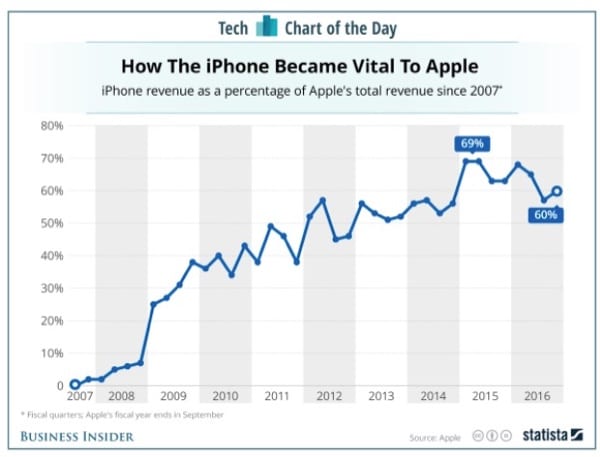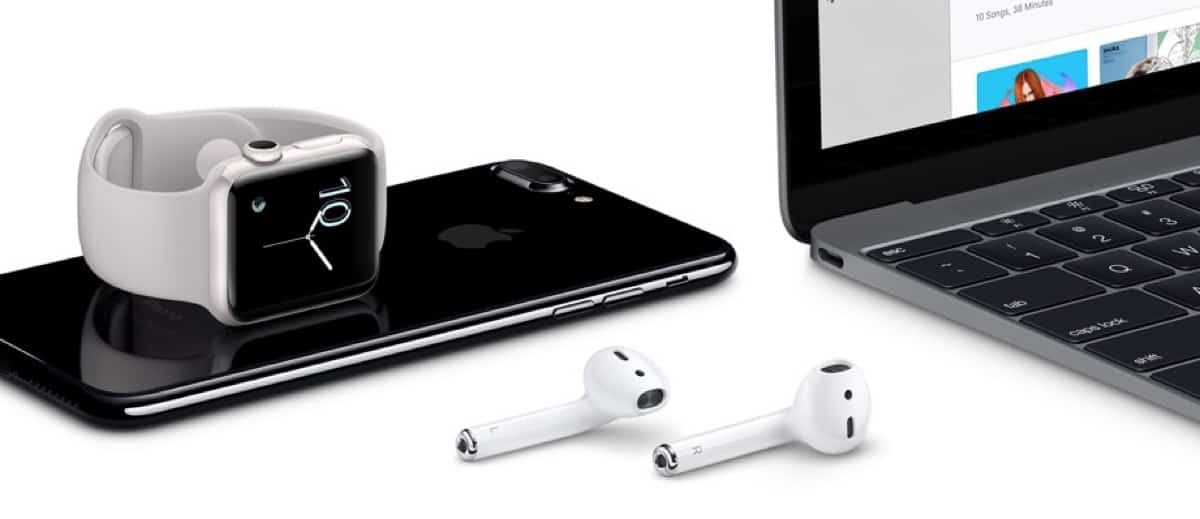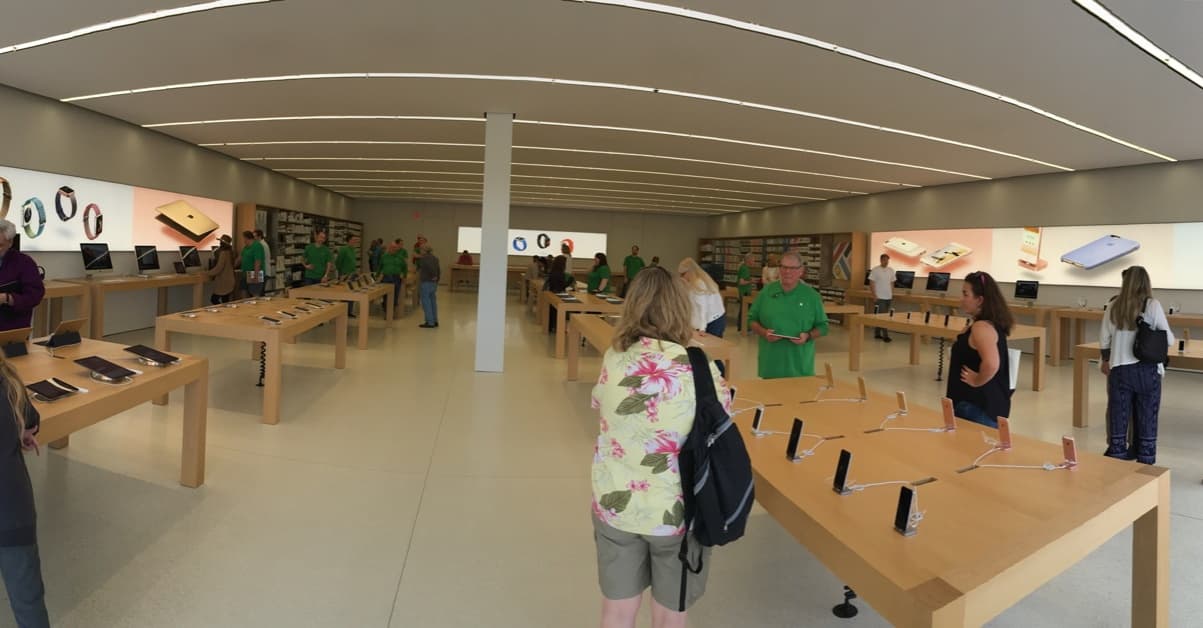Up through early 2016, Apple had a rich and fairly current product line. Several different new and one generation old iPhone were available in addition to the iPhone SE. iPad sizes covered the spectrum from 7.9 to 9.7 to 12.9-inches. MacBook Pros were not yet a year old. New iMacs has just been released the previous October. The latest Mac mini was only 18 months old.
And then something interesting happened deep into 2016.
It almost seemed as if Apple was about the business of rethinking its entire product line. Of course, some of that malaise has been attributed to mismanagement of engineering resources. We learned about that from Mark Gurman here:
How Apple Alienated Mac Loyalists
and …
“Apple Vowed to Revolutionize Television. An Inside Look at Why It Hasn’t”
Moving Forward
Over and above the internal struggles at Apple, this process of rethinking and upgrading the product line got me thinking. One trigger was this slide show from ZDNet, “Seven Apple products that are headed for extinction.” My question is this: which products need to die and which products are all too easy to let slip into history for lack of profitability or interest?
I shall have more questions than answers here.
This brings up a related question about Apple that has intrigued me lately. Namely, should Apple continue with a rich selection of products that appeals to a very broad consumer base? Or does the return on investment analysis (and available engineering talent) suggest that Apple should focus on the one product that generates most of Apple’s revenue, the iPhone?
This chart from January shows the iPhone revenue as a percent of total revenue since the iPhone launched in 2007.

By that standard, one could argue that Apple has morphed into the “iPhone Company,” and not much else matters. And yet, many have pointed out the dangers of that formula.
Will the iPhone last forever, as a concept in personal computing? Will incremental improvements keep it going for a generation? Or will the Next Big Thing come along to completely supplant it? Apple is looking at its services, which are growing, as a hedge against any serious bump or disruption in the iPhone concept. But does that mean forsaking great hardware across the board?
All of this weighs on how Apple thinks about its current product line. For example, iPad sales continue to decline while Mac sales are holding steady. The gentle lapse into history of part of the Mac product line doesn’t seem called for. And yet. More to the point, what strategic changes to the concept of the Mac might be ahead? For example, if a 27-inch iPad isn’t on the drawing boards, why blow up powerful desktop Macs that appeal to creative professionals, then limit the power of MacBooks, and get out of the big display business? Why depend on LG? We’ve seen how rocky a road that has been.

Another factor is the world of education. Microsoft and Google, sensing weakness, are going after Apple in education. Fortunately, at our local college, you can still go to the campus bookstore and buy an introductory level 13-inch MacBook Air loaded with Microsoft Office for US$599. So when Apple thinks about discontinuing the inexpensive, outdated MacBook Air, it also has to think about its commitment to education sales and the average student’s checkbook balance.
Moving on. The iPad mini is another product that seems to be in the edge of extinction and is on ZDNet’s list. One arguments is that people who would buy a 5.5 to 5.8-inch iPhone don’t really need a 7.9-inch iPad mini. One can argue that it was an evolutionary product from the days of small iPhone displays and, perhaps, appealed to only a small market segment. And yet, is it beyond the industrial capacity of Apple to keep it alive as incremental revenue? Is it wise to drop an iPad product when the entire product line is in decline?
The Apple Family of Products … and Us
There was a time when customers felt uncomfortable with the peripheral offerings of Apple’s competitors. These offerings were often not extremely well made, not well designed and not easy to operate. It was a natural thing to have an Apple Cinema display, an Apple Wi-Fi base station (remember those awesome flying saucers?), an Apple computer and an Apple iPhone.
More and more, as Apple has dropped out of some of these markets, hungry competitors have seen an opening and moved in. HP with displays and PCs for the technical and creative professionals. Microsoft with the enterprise cloud and Surface. Google in education. The new Mesh Wi-Fi products. Just to name a few.
And so the question I’ve had lately is this. Where does Apple want to be in our lives? Which products need to survive and be nourished, lest the competition take that market away to our great displeasure and inconvenience? What is the strategy for a coherent line of products that interoperate, that are fundamental to the customer and to Apple’s long term plans?
As we move into 2017, we’ll all continue to observe and try to figure out a product strategy that is both within Apple’s capacity and vision and which serves its customers across the board. Some beloved products may have to die, but will they be replaced by a grand and understandable vision going forward? I think that’s something to watch for in 2017.

We will have our answer as to whether or not Apple cares about “professionals” (scientists, UNIX geeks, video / audio pros, etc.) no later than the end of WWDC this June. If Apple does not introduce new Mac Pros or a very high-end iMac by then, then they’ve told us loud and clear that they don’t care about us. I will give them till then.
I’m afraid the iPhone will shrink in perceived value as the Mac ecosystem withers. While the Mac business may be a small slice of Apple’s profits, it’s still a great business with high margins. The decision to restrict resources and development is mind boggling.
To me, the real problem with Apple being at this crossroads is that they seem to be in a holding pattern–not really pushing in any direction with any platform. Sure, there have been little cool innovations–the air pods, the touchbar, but none of them show any real commitment to some kind of vision or any sense of this is where they want to go, moving forward. Oh, and Cook keeps talking about augmented reality, but it’s so far, been only talk. Maybe this is because all real movement forward now, is much more abstracted from the hardware than in the past–the platform is not the device you hold in your hand, but the hidden platform. I don’t know. Either way, the current outcome is that Apple isn’t making compelling products that scream out to me “Buy me!” I need hardware, and need to upgrade, but Apple just gave me expensive new toys–touchbar and butterfly keys… Things that not only don’t excite me, but leave me rather cold. I’ve tried my wife’s MacBook keyboard, and it feels to my fingertips like I’m just tapping on the table. It’s not comfortable to me, even though I could type just as fast on it. I need more travel. And the touchbar… I feels like something else to go wrong, or another interface device that doesn’t really help _me_. I like the Surface Dial, in the abstract, just like I like the Touchbar in the abstract, but when I ask myself if I need it, I can’t say yes.
What do I need/want? I decided that a touchscreen is very useful. Now that I have a touchscreen computer, when I go to monitors that don’t have that, they feel limiting and dead. I love the removable keyboard _with_ the trackpad. iPad needs that. I like the pen input. I use it far more than I honestly expected. In the end, the Surface Pro hits my buttons… and that bugs me… I want Apple to be doing this stuff–not Microsoft. But for the bang-to-buck ratio, and the features that actually do help me, Microsoft had them, and Apple didn’t…
In a word (or two) Apple really needs to either figure out where they are going, or communicate it better. Right now, they are in a limbo state, and yes, I do wonder if they are focusing too much on that new campus–waiting until they are moved in before they can do anything. And if you think about it–just getting ready for a huge move from the old to the new–that has to kill man-hours, etc. (packing and storing, planning the equipment and people move, etc. Moving is very resource-consuming)
I have my suspicions that this new campus is a far bigger innovation-killer than anything else, and it’s the real reason we have seen little out of Apple lately. If that’s the case, they better ramp up, and soon.
So what is the “pro” to Apple discontinuing the Mac Pro? I only see “con”s. The fact is the MacPro is based on Xeon Intel processors with ECC DRAM. Intel has not released any worthwhile newer processors since the 2013 Mac Pro was designed. That should change later this year. So while it may seem to a consumer that Apple has left the Mac Pro to wither, presumably due to poor sales, a closer examination reveals it is not Apple’s fault. The iMac likewise was not updated in 2016, also due to the slow pace at Intel. That should change in a month or so, with the new Kaby Lake i7-7700K processor release in January. The Mac mini also has not been updated in a while. It’s based on the 13” MacBook Pro, which was recently updated. It makes sense that Apple has withheld an update for a new keyboard, either wired or wireless, with TouchBar, like that integrated into the new MacBook Pros. I’m sure there are logic and manufacturing issues in making such a device with it’s own Apple Watch like processor and OLED display. I think we owe Apple a little time to continue their excellent engineering and give Intel a little time to produce their latest processors. I’m sure a year’s advance in GPU will be appreciated. The workload of a 4K or 5K display could surely use a boost.
I’m waiting for Apple to declare the Mac mini & pro legacy products, drop support for them and still be selling them.
Apple today is clearly focused on the bottom line in a way they weren’t before. Steve Jobs cut products because he had to. The very survival of Apple was at stake. Today there is no such urgency. Letting products simply wither and die from neglect is a truly insulting way for one of the richest companies in the world to act. I know Apple has long been known for secrecy, for refusing to divulge any hint of its plans, but surely letting customers know if they should plan to keep using Apple products or switch to something else before the rug gets pulled out from under them is the right thing to do.
I understand why they stopped making AirPort products. Most ISPs include WiFi in their hardware so sales must have fallen off a cliff. I am one of the few who doesn’t want my ISP controlling my router, changing settings they don’t like or opening it up for public use.
I can still hear Phil Schiller say “can’t innovate my ass” when talking about the “new” Mac Pro. The phrase has been echoing around an empty room for years now while customers quite rightly say the innovation was of dubious or even negative value and the lack of updates ever since is a slap in the face, a smack on the head and a shovel in the ground to bury the body. They pushed professionals away and, as you’ve noted, other companies have stepped up to take that business. The Mac mini also looks abandoned (again) and I have reluctantly decided to allow a Windows PC into the house because I can’t justify paying 2017 dollars for low end 2013 technology. I bought a MBAir for my first child, but with it apparently EoL, I won’t be getting one for the second child and unless there’s a significant improvement to the MacBook value equation in the near future that kid may end up with a PC. I converted my entire extended family to Apple products, but I”m seriously considering other platforms now. Apple doesn’t seem to care.
An Apple product tree with one or two branches is ugly to envision. How would the iPhone do as a product by itself? To have any kind of tech ecosystem there needs to by other healthy branches. The tree is in danger of dying by pruning all the branches save one.
Some good points here. Apple seems to be at a crossroads. What direction it will go both excites me and fills me with dread.